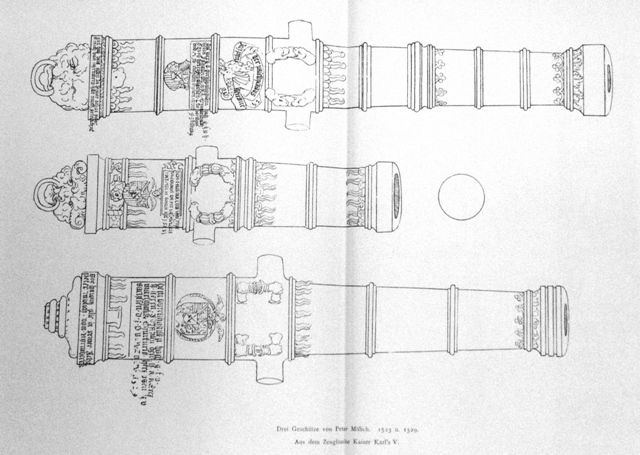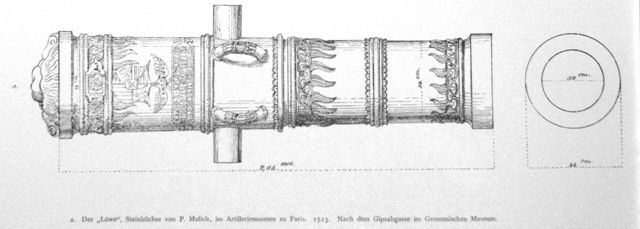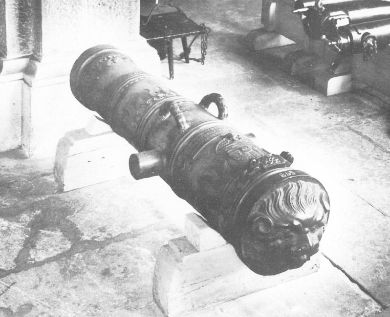
 |
|
|||||||
 |
|
|
Thread Tools | Search this Thread | Display Modes |
|
|
|
|
#1 |
|
Member
Join Date: Jun 2006
Posts: 161
|
Thanks Fernando. All the photos I have were posted in replies no. 16-18 above; I hope they will be satisfactory for your purposes.
|
|
|

|
|
|
#2 |
|
Member
Join Date: Jun 2006
Posts: 161
|
I've found a more extensive biography on Ulrich von Schellenberg, here:
http://springfieldarsenal.files.word...es-excerpt.pdf Unfortunately it is in German script so I can't transfer it to Google translate for the usual quick-and-dirty translation. I wonder if there are any free German script OCR programs out there so I could at least turn it into characters to enter an automatic translator? I can transliterate German script into more useful font, but takes more time than I have. I'm not going to bother Michael about this one, he's already spent enough time translating this stuff. I've also thought more about the "JUR" marking on the gun. I still believe it will be impossible to determine, with certainty, what that stands for, however it is almost certainly from a later period than the "1525" estimated date of manufacture, as Michael has said. One reason we know that is because the letters were crowded into a nice open space intentionally left above the coat-of-arms so the c.o.a. would be reasonably centered in an open (plain undecorated) area. I think the letters indicate a subsequent owner, after Ulrich had left the battle zone of northern Italy ca. 1529. It is possible that it was captured at some point, or more likely simply retained by whatever Swiss mercenary was using it, probably with Ulrich's consent. Or perhaps it remained under control of Ulrich's commander, General Ramon de Cardona. Who knows. |
|
|

|
|
|
#3 |
|
(deceased)
Join Date: Sep 2008
Location: Bavaria, Germany - the center of 15th and 16th century gunmaking
Posts: 4,310
|
John, I read this 'biography' and believe me: it's not worth translating from a modern scholarly point of view. All it is is nothing more than an even more pompous and poetically as well as patriotically overdrawn 18th c. legendary version of the already rather bombastic 19th c. text I translated for you. No more facts, just heroic fantasy. I wouldn't give a dime.
Best, Michael |
|
|

|
|
|
#4 |
|
Member
Join Date: Jun 2006
Posts: 161
|
Thanks Michael, that will save a lot of trouble.
|
|
|

|
|
|
#5 |
|
Member
Join Date: Jun 2006
Posts: 161
|
I was leafing through Essenwein, A., QUELLEN ZUR GESCHICHTE DER FEUERWAFFEN, Academische Druck u.v. Graz 1969, Tafel Band, and noticed drawings of some cannons cast by Peter II Mulich of Zwickau. They have rings of undulating flames at various places along the barrel, just like my hackbut. These cannons range in date from 1523 to 1529. This is interesting to me as it indicates a connection between my hackbut and these cannons. I wonder if my hackbut could have been made by Mulich, who may have used the flames as a kind of trademark? If not, were these rings of undulating flames significant somehow to Charles V or to the Holy Roman Empire? What is the connection indicated by these flames? I am posting two images here which I can do under the international doctrine of fair use for educational purposes.
 
Last edited by cannonmn; 20th December 2011 at 03:34 AM. Reason: Reduce image size |
|
|

|
|
|
#6 |
|
Member
Join Date: Jun 2006
Posts: 161
|
This photo, found on the web, is dated 1940, at the time this cannon was taken from the Army Museum in Paris and moved to the City Museum in Zwickau. A drawing of this elegant cannon is in the previous post. I'd like to know if this is the only surviving Peter Mulich cannon. I've emailed the museum in Zwickau to ask if they can provide any better photos of this cannon. If anyone has any better photos of this gun, please post them here. There is apparently a photo of this gun in the book "Deutches Bronzegeschützrohre" which I don't have.

Last edited by cannonmn; 20th December 2011 at 07:41 PM. Reason: install umlaut |
|
|

|
|
|
#7 | |
|
Member
Join Date: Jun 2006
Posts: 161
|
Here's an excerpt from a Google Book on the Elector Frederick which, although my German is poor, seems to clearly indicate Peter was involved in casting "buchsen." There are so many different terms for this general class of weapons that it is confusing to non-German-speaking researchers, and perhaps some Germans as well.
My latest question: Since now we know Peter II Mulich was a Feuerbuchsen-caster and not only a cannon-founder, are any other hackbuts/arquebus known which can be attributed to Peter Mulich of Zwickau (formerly of Nuremberg.) Quote:
|
|
|
|

|
|
|
#8 |
|
(deceased)
Join Date: Sep 2008
Location: Bavaria, Germany - the center of 15th and 16th century gunmaking
Posts: 4,310
|
CONGRATULATIONS TO THE RESPECTIVE BUYER (who may have been the same in both cases). The first item is the most ridiculous and primitive mid 20th c. "Italian" piece made to fool the biggest fool ever. Compared to that, Goofy's "blunderbusses" are purest gold; they, at least, are funny ... The second item is the world's finest known Nuremberg cast brass, or "bronze", haquebut barrel, half a millennium old, unmatched, and once ordered by an important person of history: Ulrich von Schellenberg, whose extremely fine Katzbalger is preserved in the Vienna Habsburg Armory, at the Kunsthistorisches Museum Wien. They both fetched the same price, in the land of ... whatsoever. The consigner, and the auction house, succeeded in generating a truly Freudian slip, misspelling "hackbutt", for haquebut/hackbut. On second thought, though, they mave been right ... The State of Austria could not afford to purchase that singular piece - not now, nor in years in come ... Tu felix Austria ..?! A very sad "Good Night", from a very sad Michael, who did his very best to save that barrel but had to quit, or commit murder suicide ...  Last edited by fernando; 2nd December 2015 at 05:04 PM. |
|
|

|
|
|
#9 |
|
(deceased)
Join Date: Sep 2008
Location: Bavaria, Germany - the center of 15th and 16th century gunmaking
Posts: 4,310
|
I bet the oldest item in the images is the wooden stand ...
Just look at the crispness of the drilled touch hole - a 15th c. barrel smith would just have punched the hole through the red hot barrel ... Of course, that would have left a notable mold around the hole which, at the same time, would have held enough priming powder for the igniting iron to set off the load! All this is so blatantly obvious that it seems just unbelievable. m Last edited by Matchlock; 11th October 2014 at 04:24 PM. |
|
|

|
|
|
#10 |
|
(deceased)
Join Date: Sep 2008
Location: Bavaria, Germany - the center of 15th and 16th century gunmaking
Posts: 4,310
|
.
Last edited by Matchlock; 11th October 2014 at 04:26 PM. |
|
|

|
 |
|
|